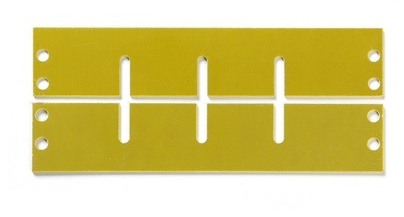- 03
- Nov
Introduction to the application functional characteristics of epoxy glass fiber board
Introduction to the application functional characteristics of epoxy glass fiber board
Epoxy glass fiber board, epoxy phenolic laminated glass cloth board, epoxy resin generally refers to organic polymer compounds containing two or more epoxy groups in the molecule, except for some, their relative molecular masses are not high. The molecular structure of epoxy resin is characterized by the active epoxy group in the molecular chain. The epoxy group can be located at the end, in the middle or in a cyclic structure of the molecular chain. Because the molecular structure contains active epoxy groups, they can undergo cross-linking reactions with various types of curing agents to form insoluble and infusible polymers with a three-way network structure.

Epoxy glass fiber board application characteristics and functions:
1. Mechanical properties. The cured epoxy resin system has excellent mechanical properties.
2. Strong adhesion. The inherent polar hydroxyl groups and ether bonds in the molecular chain of epoxy resins make it highly adhesive to various substances. The shrinkage of epoxy resin is low when curing, and the internal stress generated is small, which also helps to improve the adhesion strength.
3. Convenient curing. Choose a variety of different curing agents, the epoxy resin system can almost be cured in the temperature range of 0 ~ 180 ℃.
4. Various forms. Various resins, curing agents, and modifier systems can almost adapt to the requirements of various applications on the form, and the range can be from very low viscosity to high melting point solids.
5. Low shrinkage. The reaction between the epoxy resin and the curing agent used is carried out by direct addition reaction or ring-opening polymerization reaction of epoxy groups in the resin molecule, and no water or other volatile by-products are released. Compared with unsaturated polyester resins and phenolic resins, they show very low shrinkage (less than 2%) during curing.
